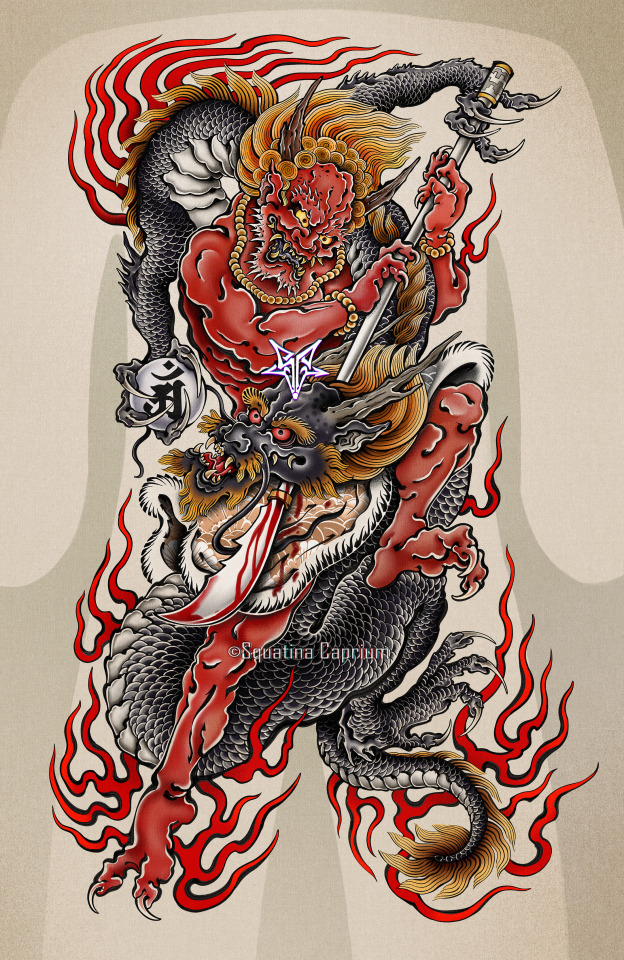#irezumi
Text


i made a transparent version of the front of tat i imagined for kenshi, free to use if any mk artist want to skip this part of the lineart!!
220 notes
·
View notes
Text

Art by JAE KWANG PARK
106 notes
·
View notes
Photo


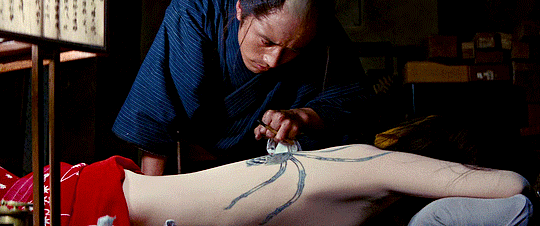
Irezumi (1966)
Yasuzo Masumura
437 notes
·
View notes
Text

iwai munehisa the man that you are
264 notes
·
View notes
Text
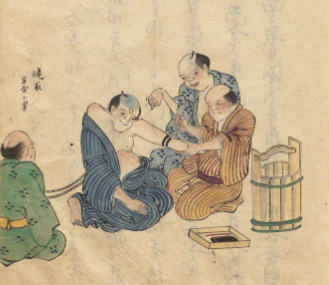
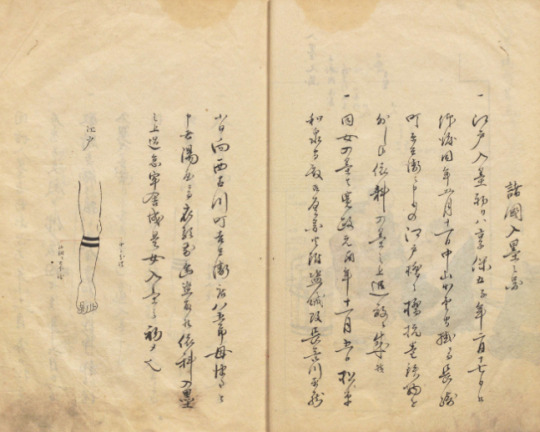
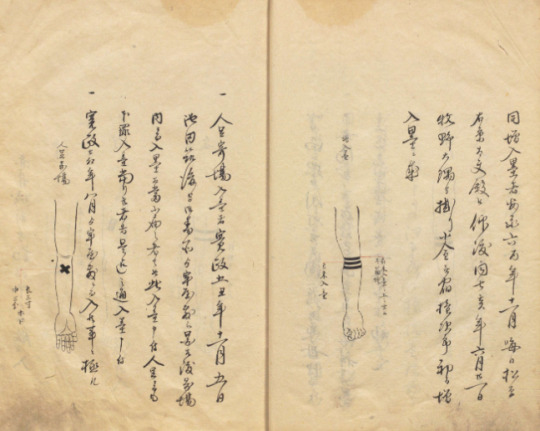

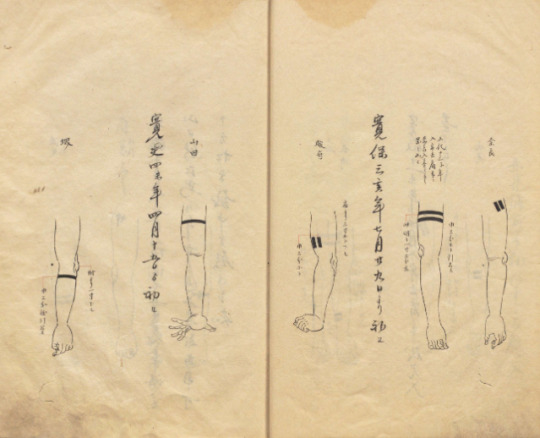
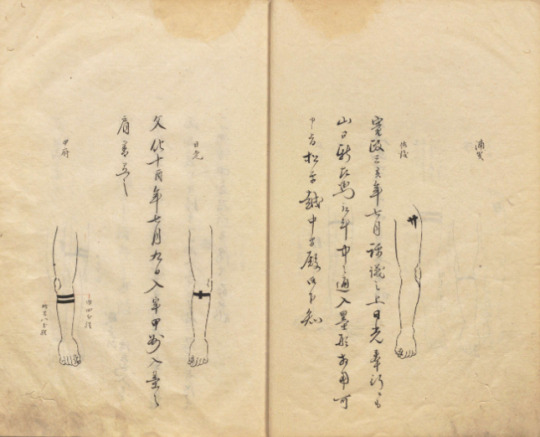
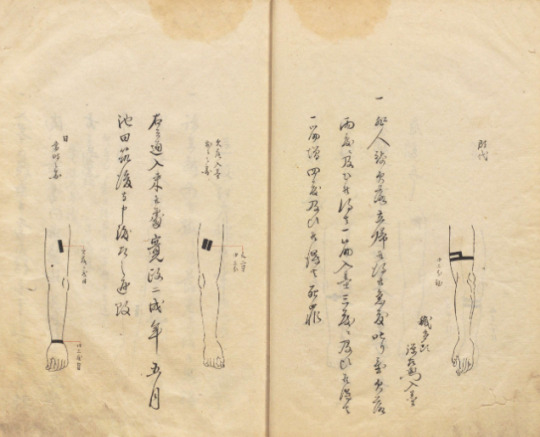
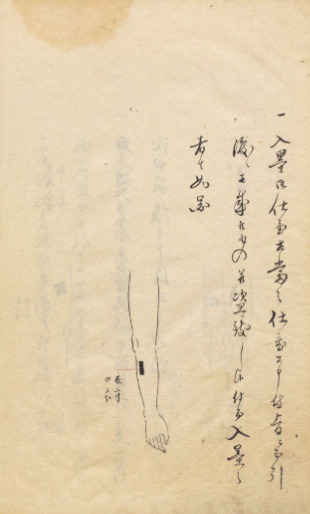
Irezumi kei (tattoo penalty) as depicted in the [徳鄰厳秘録 - Tokuringenbiroku], a kind of penalty instruction book compiled in 1814, digitalized by the National Archives of Japan.
CW for this post about Edo period judiciary => mentions of physical punishment, torture, death penalty (text only, no details, no graphic illustrations) . The irezumikei pages above are p.19 to 25.
I won't reproduced the illustrations here, but the Tokuringenbiroku book also presents other Edo period "punishments" and death penalties, like different types of goumon (torture), gokumon (decapitation and exposure of the head to public view), kakei (stake), haritsuke (crucifixion), or tameshigiri (sword cut testing, here on executed convict corpse).
Please proceed to the full book according to your sensibilities!
Back to irezumi kei : the markings of character Akaza (from Kimetsu no Yaiba/Demon's Slayer) are directly inspired by those, same for Mugen in Samurai Champloo for example:

After Tokugawa Yoshimune's reforms abolished bloodier punishments (nose or ear cutting) for lesser crimes (like theft, gambling or fraud), irezumikei spread, inspired by Chinese bokkei practices.
Yet, zainin (lawbreakers) were also often beaten or whipped (tataki), which could be a "light" sentence or more far extreme one. Women tended to be imprisoned instead.
Punishment tattoos also often went alongside tokorobarai (banishment), which had several levels depending on the crime. You could be banished to a remote island, just away from your city, or forbidden to enter a certain perimeter.
Exile is why different areas had different marks, placed on the arms or faces, easily identifying the person as a criminal convicted in another region.
Number of lines or dots were often used to symbolize repeated offences (pic below source). Most of the times, getting 3+ irezumikei could grant you death penalty.
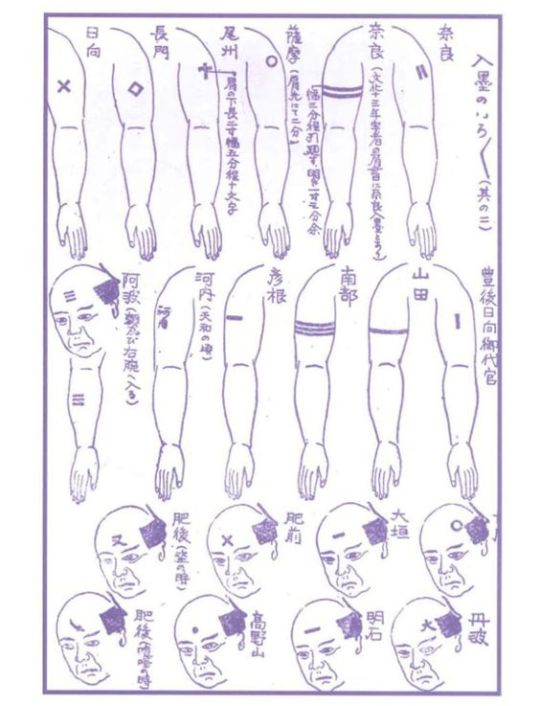
Irezumikei maybe be why criminals came to use extravagant tattoos, as to cover their infamous marks, leading to the yakuza association with body ink.
Yet, other strata of population also favored figurative tattoos, so the link between criminals and tattoing in Edo period is not self-evident.
Some shapes of -sode (sleeve part of a tattoo) for example left arm interior bare, maybe to prove then that no armband tattoo was hidden underneath a bigger design.
#japan#japanese history#Edo period#crimes#judiciary#theft#fraud#cw: physical punishment#cw: torture#cw: death penalty#irezumi#Japanese tattoo#horimono#irezumikei#criminal tattoo#yakuza#tokorobarai#tataki#gokumon#kakei#haritsuke#tameshigiri#徳鄰厳秘録#Tokuringenbiroku
305 notes
·
View notes
Text
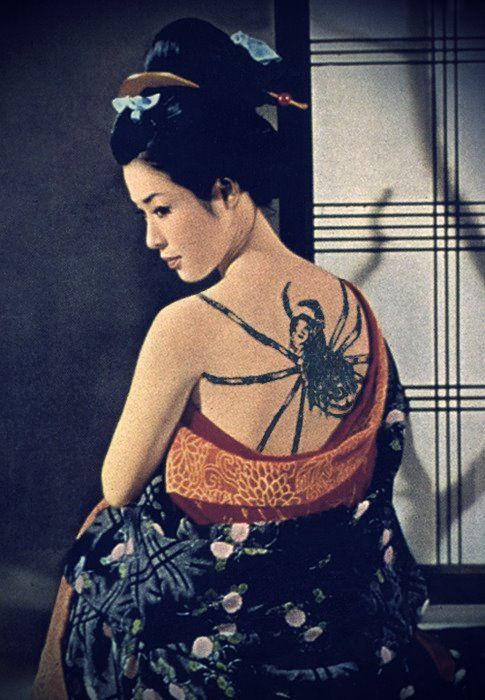
Irezumi (1966) Dir. Yasuzo Masumura
575 notes
·
View notes
Text
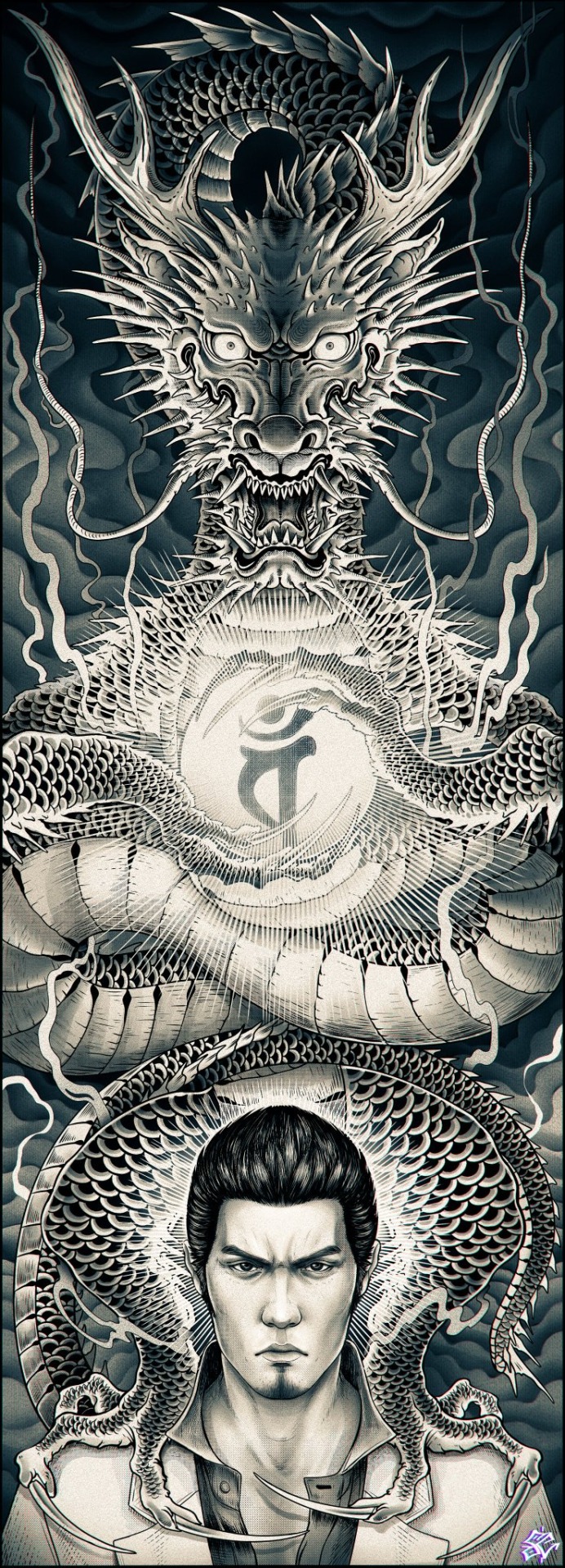
Did this after i finished Kiwami 1 and 2
#ryu ga gotoku#rgg#yakuza#yakuza fanart#rgg fanart#game fanart#fanart#fan art#kiryu kazuma#kiryu#my art#digital painting#digital illustration#digital fanart#digital art#photoshop art#dragon art#dragon#irezumi#dragon irezumi
650 notes
·
View notes
Text

An early example of Irezumi tattoos, 1870s
#japan#japanese art#japanese photography#yakuza#meiji era#edo era#edo period#meiji period#samurai#tattoo#tattoos#irezumi#traditional tattoo#stick and poke#handpoke
295 notes
·
View notes
Text
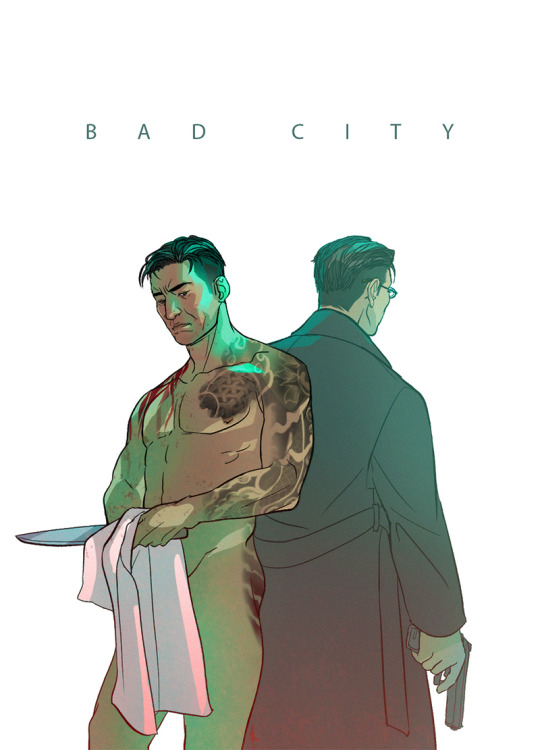
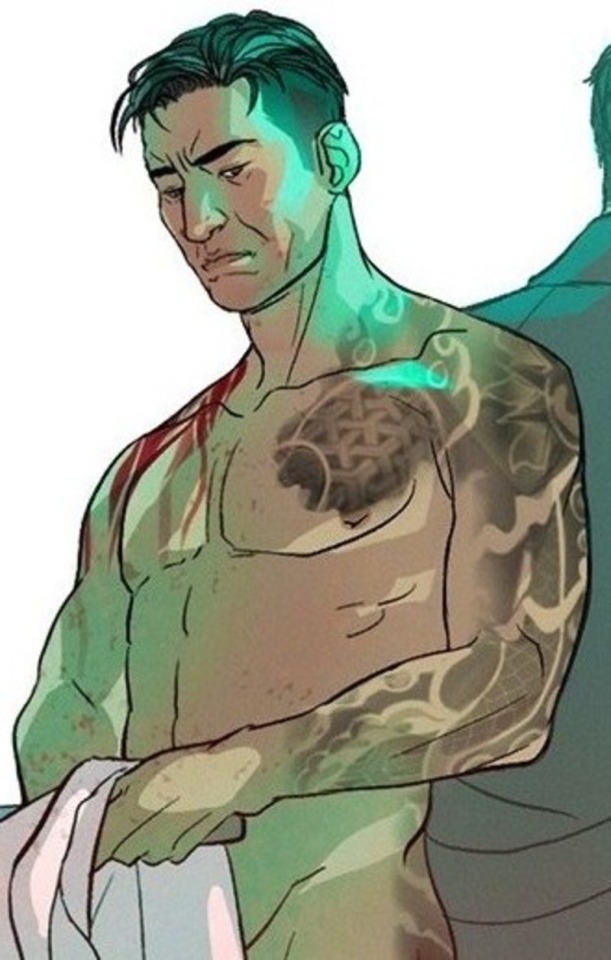

Bad City (2022)
#yamaguchi yoshiyuki#specifically 😌#bad city#movies#my art#tatoo#irezumi#blood tw#nudity tw#yakuza#theashenphoenix
56 notes
·
View notes
Text

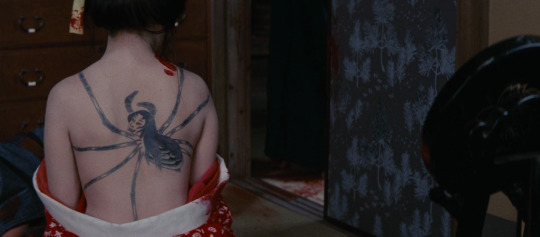

Irezumi (1966) Directed By: Yasuzo Masumura
764 notes
·
View notes
Text
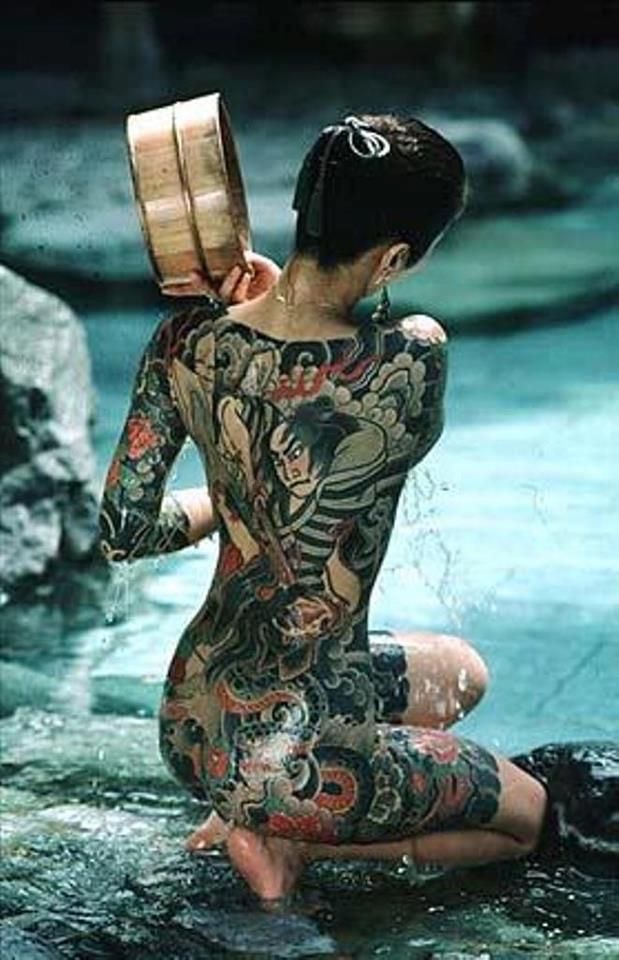
Onsen 温泉
173 notes
·
View notes
Text
Doumeki's irezumi
Irezumi (入れ墨, lit. 'inserting ink') is the Japanese word for tattoo, and is used in English to refer to a distinctive style of Japanese tattooing.
In chapter 53, Doumeki's back tattoo is revealed to be a "celestial maiden". Typically, irezumi incorporates motifs such as dragons, Buddhas, samurai, koi fish, and more, each carrying specific cultural and symbolic meanings referred to as wabori (和彫り). Intrigued by Doumeki's tattoo, I went asking if Doumeki’s tattoo is identified as any wabori and received responses suggesting it could represent either Nuwa (女媧) or Benzaiten (弁才天), given the details of snake and the stone in the goddess’ hands. After some research, Nuwa (女媧) seems to be more aligned with the story than Benzaiten (弁才天). However, I still present both of them and their possible interpretations in the story.

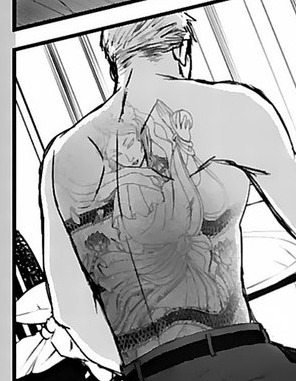
I. Nuwa (女媧)
Nüwa, is a mother goddess, cultural heroine in Chinese folk religion, Chinese Buddhism, Confucianism and Taoism. She is credited with creating humanity from clay by the river bank and repairing the Pillar of Heaven. Let’s focus on the myth of “repairing the Pillar of Heaven”.
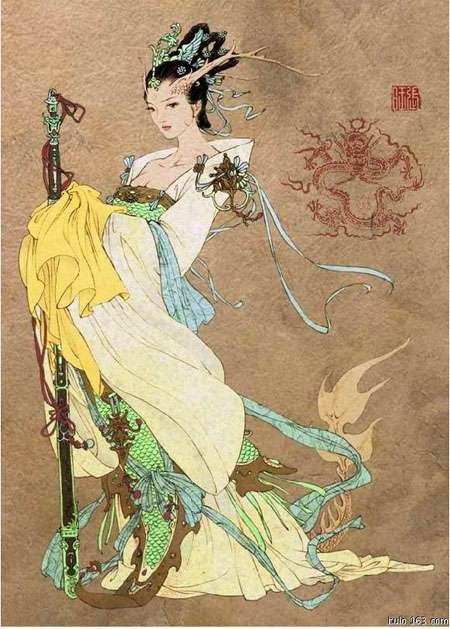
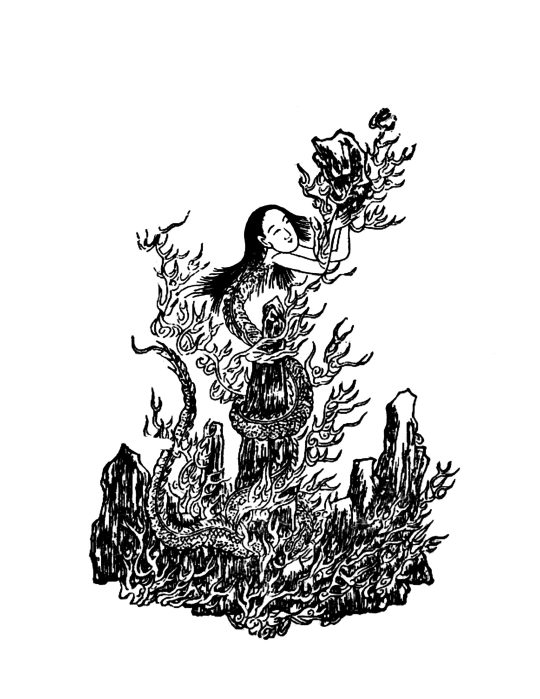
The world of the first beings was very different from ours now. The earth was just in its infancy and was only separated from the sky by four very large pillars.
One day, Gonggong (龔工), the god of water, and the god of fire, Zhurong (祝融) became locked in a massive battle that would determine the ruler of heaven. Gonggong, who was motivated by evil, ultimately lost the fight and crashed his head against Buzhou mountain—one of the four pillars holding up the heavens. The earth began to tremble and the pillar collapsed and ripped a hole in the sky. At this point, the earth was completely in tatters from Zhurong and Gonggong’s epic battle. Fires had scorched the earth, water was pouring incessantly from the hole in the sky.
The ancient Chinese historian Sima Qian (司馬遷), recorded the following account of Nüwa’s heroic deed:
“Hereupon Nüwa melted stones of the five colours to repair the heavens, and cut off the feet of the tortoise to set upright the four extremities of the earth. Gathering the ashes of reeds she stopped the flooding waters, and thus rescued the land.”
From that moment on, the water in the heavenly palace no longer cascades on earth to cause harm to the people.
In mythology, Nuwa played a crucial role in repairing the sky hole and preventing heavenly water from pouring onto the earth. As rain – the water from the sky, the befallen suffering, is one of the main themes of Saezuru, the parallel is pretty evident. Given Doumeki’s persistence to stay in the yakuza world and his decision to have a wabori that big on his back, he is doing everything he can to manifest his devotion to stay on Yashiro’s side, end his suffering and protect him from any potential harms, even though up to the newest developments of the story, it doesn’t seem likely at all. They’re both confused and hurting each other.
II. Benzaiten (弁才天)
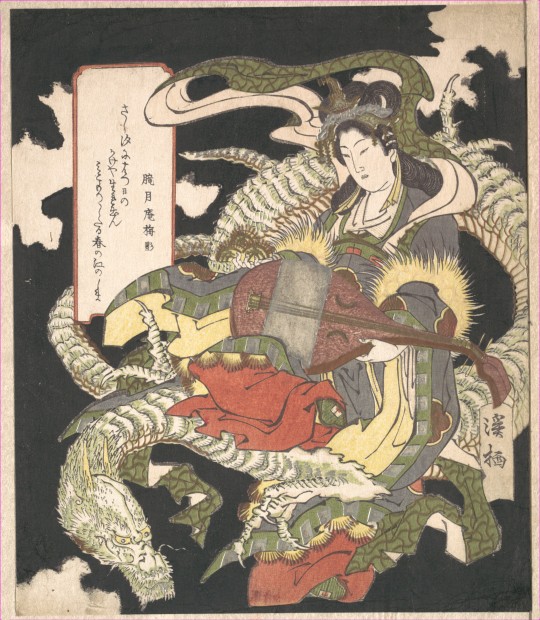
Benzaiten ( 弁才天 ) is the “goddess of eloquence" who originated mainly from the Hindu Indian Saraswati, goddess of speech, the arts, and learning. While Benzaiten retains many of the Indic attributes of Saraswati (as patron of music, the arts, eloquence, knowledge), she also has many unique aspects, roles and functions which never applied to the Indian goddess. As such, Benzaiten is now also associated with dragons, snakes, local Japanese deities, wealth, fortune, protection from disease and danger, and the protection of the state. Benzaiten is depicted in a number of ways in Japanese art, one of which is her portrait wielding a sword and a wish-granting jewel (cintāmaṇi).
Eloquence and wish-granting? I haven’t been able to draw the parallel to Saezuru yet.
So I’d stick to the interpretation that Doumeki’s tattoo is Nuwa.
#saezuru tori wa habatakanai#saezuru#twittering birds never fly#doumeki chikara#囀る鳥は羽ばたかない#irezumi#celestial maiden#nuwa#mythology#yoneda kou#yaoi manga#tattoos
30 notes
·
View notes
Photo
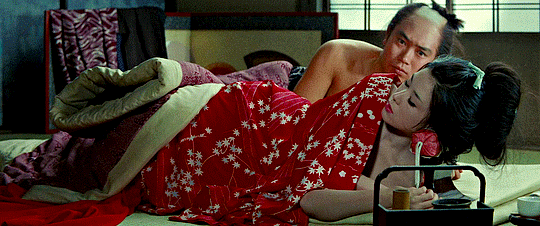

Irezumi (1966)
Yasuzo Masumura
350 notes
·
View notes
Text


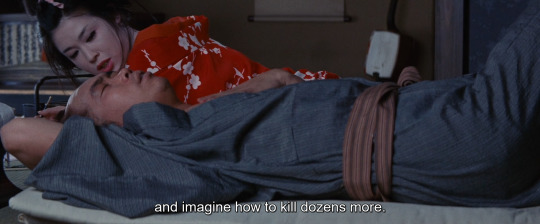


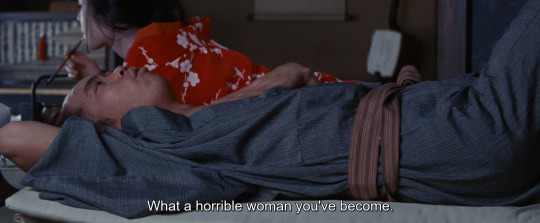
Irezumi - Yasuzo Masumura 1966
114 notes
·
View notes
Text

A rear view of Mayhem in an agura tie. アグラのネクタイのメイヘムの背面図。
Model: MX Mayhem
62 notes
·
View notes
